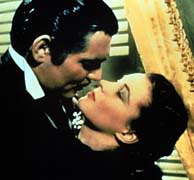Monday, March 8, 2010
Hurt Locker Wins Best Picture
Friday, February 19, 2010
Some Search For Perfect Election System
There’s a good story in today’s Congress.org about IRV and the Academy Awards. It was a balanced article and I want to address some of the opposing comments. No election system is perfect, but that doesn’t stop critics from piling on IRV.
"You start overwhelming voters and you start losing people at the lower end of the socioeconomic scale,"I hope that doesn’t mean that Americans are stupider than Australians or the Irish? I don’t think so.
There will be people that lack confidence in the outcome, because whoever gets the most first choice votes may not win," McCloy said. "Whichever movie is the most mediocre could win, because it could get the most second- or third-place votes
"In summary, one criticism leveled against RCV / IRV – that candidates who do not obtain the most votes in the initial iteration of voting can go on to win the election outright – is also a function of a traditional primary and general election dynamics."
Tuesday, February 2, 2010
Looking At Majority Voting Systems
Who will win the Academy Award for Best Picture? According to the new rules for the Oscars, a majority of Academy members will decide.
With expanding the number of nominees for an Oscar, the Academy needed to look at voting methods. Ranked ballots didn't create all the choices - it only accommodates them. And by giving members choices by preference, a voter can feel invested in more films. It's like. "Heck, my first choice lost but I did rank the winner high on my ballot so I'm happy."
Krist Novoselic serves as Chair of FairVote Board of Directors.
Wednesday, January 27, 2010
IRV versus Sandra Bullock?
Imagine that there are 100 voters, and only three nominees: Sandra, Gabbie, and Carey. Of those 100 voters, 40 believe Sandra should win, and 60 believe that either Gabbie or Carey should win, but that either of them would be better than Sandra. In other words, 60 of the 100 voters believe that ANYONE but Sandra should win.After seeing how IRV changes the dynamics, Pigeonrat shows how IRV gives us a consensus winner: the actress taking home the award will not be the one disliked by most voters. We'll only get to see IRV in play for Best Picture, but perhaps folks will like the result and decide it can be applied more broadly. We'll see!
Tuesday, January 26, 2010
Producers Guild Uses IRV to Pick 'Hurt Locker'
But for our purposes, one award show really is worth taking a look at, and may in fact be a harbinger of things to come. The Producers Guild, whose awards were doled out last night, also decided to use the instant runoff system for choosing their Best Picture award shortly after the Motion Picture Academy announced their decision to do the same.
The surprise winner was Hurt Locker, a small-budget film that goes against the usual common wisdom of the Producers Guild awarding habits. As Tom O'Neil at the LA Times puts it:
Some kudos watchers believed that the guild would automatically pick "The Dark Knight" as best picture last year because producers care a lot about their films' succeeding financially. "The Dark Knight" was not only the top-earning movie of 2008 ($531 million in the U.S., $997 million worldwide) but the second-biggest-grossing pic of all time, surpassed only by "Titanic" ($1.8 billion worldwide in 1997).
But "Slumdog Millionaire" was a fantastic financial success in other ways. Produced for only $14 million, it went on to gross $377 million worldwide. Not so "The Hurt Locker," which was produced for $11 million and sold only $16-million worth of tickets at the box office.
Since the Oscars will also use IRV, it stands to reason that usually-predictive power of the Producers Guild may continue to hold true. If there's a soft spot in the majority of Academy members' hearts for Hurt, then what might be a rabid minority for Avatar or Inglorious Basterds may leave disappointed.
Tuesday, January 19, 2010
The Wizard of IRV - The Oscars Get Preferential
Let's make it even tougher. Now let's go nuts and throw in not two but seven other films. Dark Victory; Goodbye, Mr. Chips; Love Affair; Ninotchka; Of Mice and Men; Stagecoach; and Wuthering Heights.
Holy moly.
I know what you're thinking: With all these amazing classics all vying for the top prize, you could easily have a ten-way split! The winner could squeak by with a meager 11%, and worst of all, it could be the movie that most people didn't want to win. The winner could theoretically be the film opposed by 89% of those who voted.
But this is the choice the Motion Picture Academy faced in 1939. Ten really strong nominees. How could they ever decide?
They used instant runoff voting (IRV). In the parlance of the movie biz, they usually refer to it as "preferential voting," but it's the same thing. Voters rank their choices in order of preference (1, 2, 3, etc.). If no movie is the first choice of a majority, the film with the least first-choice votes is elliminated and the second choices of those voters are distributed. This process continues until we have a winner over the 50% mark, ensuring a majority consensus winner. In 1939, it gave us Gone with the Wind as the winner. The last time they used IRV was in 1943. Since then, they moved to five nominees, with the winner selected by mere plurality (first-past-the-post).
Last year, the Academy changed its mind again, and declared that for 2009, the old ways were the best ways. 2009's ceremony will see 10 nominated films compete for the Oscar under the IRV rules once again. This site is dedicated to taking a fun look at how this voting system, which works so well in political races, will change the game for the Oscars. IRV is great for elected office--it helps ensure majority consensus and eliminates the spoiler problem (when strong third parties tip a race one way or the other). We think it will be great for Oscar, too.
So keep coming back here for an exciting look at how this electoral reform is changing the way we do the Oscars. We'll be making sure to clear up misunderstandings and mistakes made by people who are just discovering IRV, and just like you, we'll be watching very closely who gets nominated, and who comes out on top.
Thursday, January 14, 2010
Rumors of a Consensus Choice Among Possible Nominees?
Writes Tom O'Neil at the LA Times:
I admit that "Basterds" probably won't get the most first-place votes, but a weighted ballot is being used this year. Academy members are ranking all 10 contenders. While chatting with many voters, I hear widely divergent opinions of "Avatar," "The Hurt Locker," "Precious" and "Up in the Air," but support for "Basterds" is strong and consistent. That's why it is the most formidable contender of all.This is also the view at InContention.com:
As you surely know, this will be the first year the Academy uses preferential voting in the Best Picture race, determining the winner based on rankings rather than single votes. This ostensibly favors the most broadly liked (or least resented) film in contention. It could be that an “Up in the Air” benefits more from the system than a polarizing oddity like “Basterds,” but visible support across the branches can only help.And that's the idea behind IRV: in the political context, when many candidates run, you want to make sure the winner is someone that the most possible voters can live with, rather than elect someone with a tiny plurality who is hated by the vast majority.
Over at the Movie Blog, the point is well understood as to why the system had to change:
To make this abosultely clear, it doesn’t matter [under the old system] if 82% of the Academy dispise the movie, if it gets more votes than any other, it is the Best Picture. Even though there’s rarely really a five-horse race in the category, it’s kinda depressing if you think that any of the movies to receive the honour may only have received the thumbs up from a fifth of the membership. Well, either that or it helps explain strange victories like Shakespeare in Love. Maybe it only got 22% of the votes!While yours truly is a big fan of Shakespeare in Love, actually, the point is well taken. It seems like Crash, for example, was an odd duck winner in 2006 considering that the multiple-award-winning Brokeback Mountain was also in the mix--but who knows what would have happened with a little instant runoff to settle the question. We'll get to find out for this year's crop.
Tuesday, January 5, 2010
Don't Panic! The IRV System for Best Pic Isn't So Tough to Get
. . . for best pic, there are 10 noms. So the preferential system will be used . . . And, you may ask, in a world that’s already complicated, why are they making things more difficult? Why not just go with the first-place vote? Excellent question. Here are the reasons: By using the preferential system here, [PriceWaterhouseCoopers] and the Acad avoid the possibility of a film winning with only 11% of the votes and avoid the possibility of a tie.It's not complicated at all! A film could win with 11% of the vote because there are 10 nominees, and it's possible that all 10 could fare very roughly the same, splitting the vote essentially evenly. In that scenario ( which isn't as unlikely as you might think, particularly if there's a field of similarly-strong contenders) the winner would be the one that snuck past the 10% mark, even if just barely. That's hardly grounds to consider any film a consensus choice of the Academy, so in that light, using IRV makes perfect sense. And this is also why it makes so much sense to use IRV with multi-candidate fields in political elections.
How is this so? Sorry, I’m not going to explain it. It’s too complicated and you’re asking too many questions. Trust me, it’s true.
But Gray gets it, and you can see, it's not so tough to grasp after all:
OK, so the PWC pros form 10 piles for best pic, one for each film. They go through the first-place choices. And the film with the lowest number of first-place votes is eliminated. Then they take the nine remaining films, and go through the second-place choices. Again, the lowest vote-getter is eliminated. In all, they will do eight rounds of this.
At the end, the winning film will have 50% of the votes plus one.Correct! That wasn't so bad, was it?
For a quick, handy guide to IRV, just click here.






